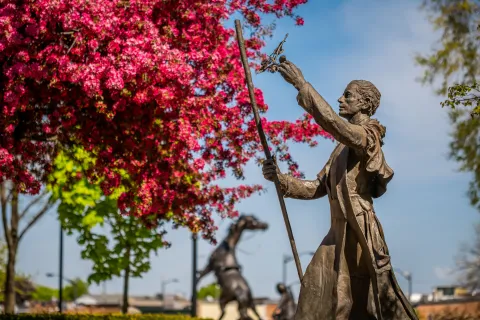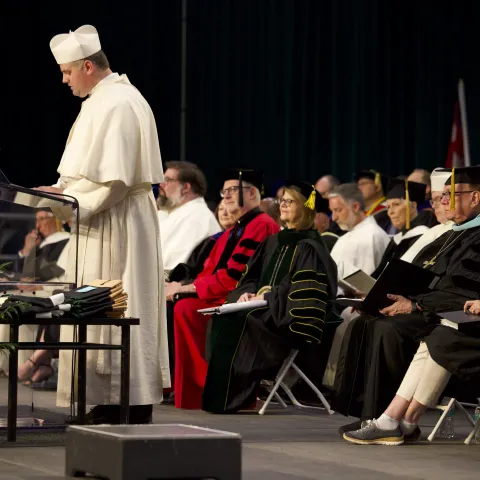-
Helpful info for
- Apply
- Visit
- Give
Popular SearchesHistory & heritage St. Norbert of Xanten, founder of the Norbertine order, was born near Cologne, Germany, around 1080. Born into nobility, Norbert initially lived a life of luxury and dissolution before his dramatic conversion in 1121, which is depicted in a monumental statue on campus.
About St. Norbert  Today, the Norbertine order includes abbeys and communities around the world, including St. Norbert Abbey in De Pere, Wis. The abbey played a central role in the founding of St. Norbert College. The Norbertine tradition remains the cornerstone of the college’s mission and values. It continues to guide St. Norbert College’s commitment to academic excellence, spiritual development and service to the common good.
Today, the Norbertine order includes abbeys and communities around the world, including St. Norbert Abbey in De Pere, Wis. The abbey played a central role in the founding of St. Norbert College. The Norbertine tradition remains the cornerstone of the college’s mission and values. It continues to guide St. Norbert College’s commitment to academic excellence, spiritual development and service to the common good.St. Norbert Abbey 
A legacy of faith and learning St. Norbert College, a Catholic liberal arts institution rooted in the Norbertine tradition, was founded in October 1898 by Abbot Bernard Pennings, a Dutch immigrant priest. Established in De Pere, Wis., to educate young men for the priesthood, it soon broadened its mission with a commerce program for lay students to meet the growing educational needs of northeastern Wisconsin. Enrollment expanded rapidly after World War II, leading the college to become coeducational in 1952. Abbot Pennings served as president until his retirement in 1955, and his vision — to foster the personal, moral, and intellectual growth of each student — continues to guide the college today.
Read More A legacy throughout the years
- Helpful info for

